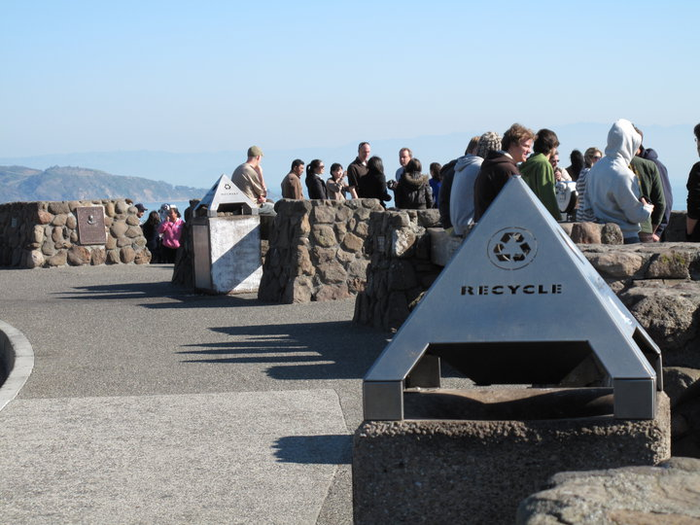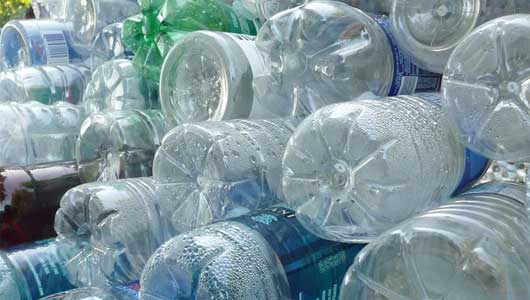It's called the Great Pacific Garbage Patch. A swirling vortex of plastic bags, bottles and other debris, a landfill some say is twice the size of Texas.
May 15, 2012
It's called the Great Pacific Garbage Patch. A swirling vortex of plastic bags, bottles and other debris, a landfill some say is twice the size of Texas.
While this area has brought concern for some time about its effects on marine life, researchers from the Scripps Institute of Oceanography found there's even more cause for worry. In a paper published by the journal Biology Letters, scientists from Scripps reported the amount of plastic debris in this part of the Pacific Ocean has grown 100-fold in the past 40 years. 
Even the researchers were shocked at this increase.
"To find this abundance of microplastics was surprising - we didn't expect this," Scripps graduate student Miriam Goldstein, lead author of the study, told PlasticsToday.
A plastic expedition in the pacific
In 2009, a group of graduate students led the Scripps Environmental Accumulation of Plastic Expedition (SEAPLEX) to the North Pacific Ocean subtropical gyre aboard the Scripps research vessel New Horizon.
During the voyage, the researchers, who concentrated their studies a thousand miles west of California, documented a high amount of human-generated trash, mostly broken down bits of plastic the size of a fingernail, floating across thousands of miles of open ocean.
"This paper shows a dramatic increase in plastic over a relatively short time period and the effect it's having on a common North Pacific gyre invertebrate," Goldstein said. "We're seeing changes in this marine insect that can be directly attributed to the plastic."
Since the pieces are so tiny, Goldstein said they weren't able to trace the waste to any particular type of plastic packaging.
"We can't tell what the objects are or how long that piece of plastic has been in the ocean," she said. "We are definitely interested in finding a way."
 Perhaps one of the most alarming facts about this study is this sharp increase of small plastic debris in the Garbage Patch could have ecosystem-wide consequences that lead to changes in the natural habitat of animals such as the marine insect Halobates sericeus.
Perhaps one of the most alarming facts about this study is this sharp increase of small plastic debris in the Garbage Patch could have ecosystem-wide consequences that lead to changes in the natural habitat of animals such as the marine insect Halobates sericeus.
These "sea skaters" inhabit water surfaces and traditionally lay their eggs on floating objects such as seashells, seabird feathers, tar lumps, and pumice.
In the new study, researchers found that sea skaters have exploited the influx of plastic garbage as new surfaces for their eggs. This has led to a rise in the insect's egg densities in the North Pacific subtropical gyre.
"The plastic debris is giving the insects places to lay their eggs as they don't have far to go to find an abundance of plastic," Goldstein said. "This is something that shouldn't be in the ocean."
In addition, data from the expedition found that 9% of the fish captured had plastic waste in their stomachs. That study estimated that fish in the intermediate ocean depths of the North Pacific Ocean ingest plastic at a rate of roughly 12,000 to 24,000 tons per year.
"I think everyone, activists, scientists, and the industry, agrees plastic has no place in ocean," she said.
Plastics industry works toward a solution
Keith Christman, managing director of plastics markets for the American Chemistry Council (ACC), echoes Goldman's statement.
"Plastics don't belong in the ocean," he said. "This is clearly a shared responsibility for all members as a society, it takes all of us to work together."
The United Nations estimates that at least 7 million tons of trash ends up in the oceans every year, of which 5.6 million tons are plastics.
Plastic makers are taking action. The plastics industries of the ACC has partnered with Keep California Beautiful project to  put more recycle bins on beaches, campgrounds, and rest areas. Since the program began in 2009, the initiative has installed nearly 700 recycling bins and educational signage in 19 communities along the California coast.
put more recycle bins on beaches, campgrounds, and rest areas. Since the program began in 2009, the initiative has installed nearly 700 recycling bins and educational signage in 19 communities along the California coast.
In terms of what the industry can directly control at manufacturing and supply facilities, Operation Clean Sweep is a program aimed at zero pellet loss in plastics handling facilities that Society of the Plastics Industry (SPI) launched in 1992. Effective among SPI member companies and others, OCS is expanding in Canada and other countries outside North America.
In November 2011, plastics industry representatives from around the world gathered in Dubai to create an action plan of solutions to marine litter.
Within the "Declaration for Solutions on Marine Litter" signed by 54 plastics industry organizations at Dubai, the plastics industry created a partnership with the Joint Group of Experts on the Scientific Aspects of Marine Environmental Protection (GESAMP), an advisory body to the United Nations on the scientific aspects of marine environmental protection. Approximately 100 projects to be carried out in 32 countries have been identified, and those are in addition to the global activities supported in common by all signatories to the agreement.
Bill Carteaux, president and CEO of SPI, said the meeting was "an excellent move toward meaningful progress by plastics industry representatives from around the world who are committed to the global action plan for solutions on marine litter."
Misconceptions about waste
Still, despite the industry's initiatives and work toward reducing waste, some consumers believe the answer is to ban various forms of plastic packaging. As one user stated on a NPR blog article, "People, please stop using plastics. Stop putting your garbage in the ocean."
Christman said the idea of banning plastics does not recognize the full scale of the litter problem.
 "There have been studies done on what materials are found on the beaches and glass bottles, aluminum cans, and plastic bottles all are among top three items," he said. "It clearly indicates litter in all types can become marine debris. It just so happens that plastics floats."
"There have been studies done on what materials are found on the beaches and glass bottles, aluminum cans, and plastic bottles all are among top three items," he said. "It clearly indicates litter in all types can become marine debris. It just so happens that plastics floats."
Goldstein said she believes plastics serve a valuable purpose.
"Plastic is awesome," she said. "The key as a society is using it in a way that is useful. The best way to find a solution is stop putting plastic in ocean, add more waste disposals. This seems to be a waste management and behavior problem
About the Author(s)
You May Also Like


